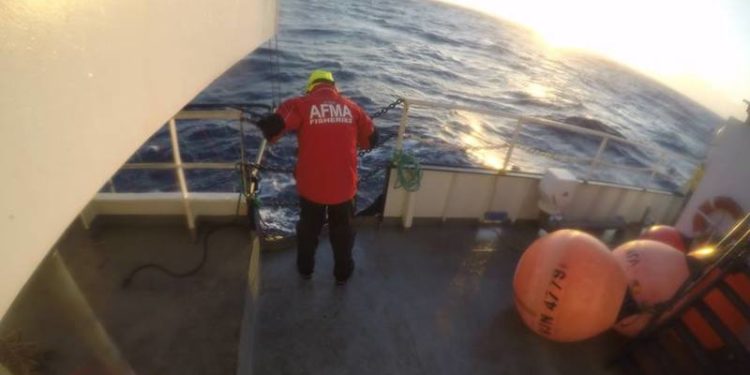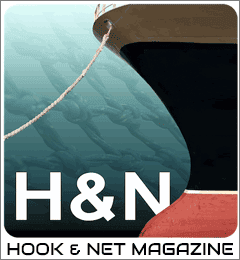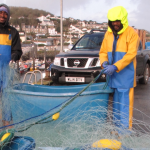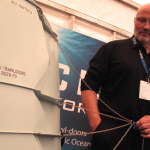The furore over claims by environmental organisations of suspicious fishing activity continues as the Australian Fisheries Management Authority (AFMA) has gently set out in response to a National Geographic article, specifically mentioning a vessel operated by Austral Fisheries, that AIS is not the same thing as a VMS.
National Geographic’s article builds heavily on material sourced from environmental organisation Oceana which claims to have identified a number of what it describes as Dark Ships – vessels with AIS switched off at particular times.
AFMA put its response to National Geographic – and to Oceana – in the form of an open letter to National Geographic journalist Sarah Gibbens whose byline appears on the piece, gently detailing the fact that there are operational reasons for switching off an AIS system, but this does not mean that a vessel is no longer being tracked. AFMA also provided a picture of one of the two fisheries officers required to be present on board every Australian vessel fishing in the Antarctic, in addition to electronic monitoring.
Dear Sarah
The Australian Fisheries Management Authority (AFMA) read with interest the article published by National Geographic, and would like the opportunity to provide you with information which changes the foundation for the story, and the report. Each country has its own regulations and management processes and Australia is very proud of its fisheries management, as all solely Commonwealth-managed fisheries are classified as sustainable.
All Australian Commonwealth fishers are required to install a vessel monitoring system (VMS), which provides accurate GPS data that allows AFMA to monitor where fishing occurs and to determine the speed, course and location of vessels. This data is not accessible to anyone other than AFMA; as you can imagine, it would be commercially valuable information to know where each fisher goes to harvest.
VMS is a dedicated satellite monitoring system that fishing vessels cannot switch off. It is contained in a sealed box with an uninterrupted power supply and any attempts to tamper with it can be detected. Most of the Antarctic vessels run a second VMS on board just in case there are any operational issues with the main unit. Should both units fail, the ship is required to manually report their location to AFMA every four hours for a finite period, before they are required to return to port for the issue to be rectified.
AFMA does not rely on Automatic Identification Systems (AIS), as it is primarily a navigation tool and it is not uncommon for fishing vessels to turn their AIS off. Vessels do this to evade pirates, or not have their location known by competitors or illegal fishers. Knowing where the vessels travel and harvest is valuable information and could be used to create opportunities for illegal fishers.
In addition to the VMS, AFMA requires that all Antarctic fisheries have on board two AFMA Fisheries Officers as observers. These individuals are employed by AFMA to collect scientific information, monitor the location of the vessel and ensure the ship is complying with the strict rules in place to fish in Antarctic waters.
While the report puts forward the case that turning off AIS means the vessel may be taking part in illegal activities, this is absolutely not the case for the Corinthian Bay referred to in your article. AFMA has checked on all of the data for the Corinthian Bay and we hold no concerns for their movements in the period in question.
The National Geographic article appears to have been updated since AFMA’s letter to Sarah Gibbens was made public.
























